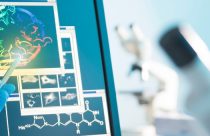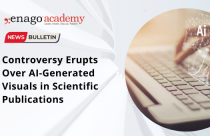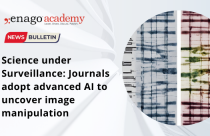Is Your Image the Whole Truth?

It has been said that a picture is worth a thousand words. Images are a powerful addition to a scientific manuscript—they can help clarify what has been said in the text and can also convey a stunning or unexpected finding. There are many software programs available for image manipulation. Although these tools may be used to remove extraneous sections of an image, it is also possible to use them to alter images in a deceptive way. In many instances, scientists are unaware that they have crossed an ethical boundary as they attempt to edit an image to make their findings more obvious. What guidelines should be used to help scientists edit their images for clarity while maintaining their professional integrity?
There are two major considerations that authors should bear in mind. The first is that they should consult the journal’s Instructions for Authors and this should ideally happen during the planning stage of any experiments that need to be performed. These instructions will provide scientific image guidelines which should be followed. Doing this before conducting any experiments will reduce the likelihood of obtaining any unacceptable images for publication. This will save the researchers from having to repeat key steps in order to use the appropriate conditions to capture an image of suitable quality for publication. Second, authors should invest time in understanding why certain forms of image manipulation are unacceptable. This will be especially helpful since in many cases unethical alterations are not made in an attempt to falsify data. Most scientists are genuinely unaware of how their actions may alter the trustworthiness of their presented data.
Ethical Image Editing
One of the more common reasons for image editing is to obtain the required quality. Many journals require a minimum resolution of 300 pixels per inch (ppi) and your image may have a resolution of 72 ppi. There are many software packages that will allow you to change your resolution; however, they do this by adding pixels—essentially filling the space with pixels that are not in the original image. This reduces the quality of the final image.
Another solution to address the resolution issue is to create vector based images instead of raster ones. Raster images are made up of pixels which mean that increasing the image size cannot be done without losing the quality of the image. GIF and JPEG files are popular examples of raster images. Vector images, on the other hand, rely on mathematical formulae to describe each object in the image and do not rely on pixels at all. As a result, changing the scale of the image does not result in a corresponding loss in quality. Vector based graphics may be EPS or SVG files.
One of the key steps to ensure that images are handled ethically is to keep several copies of the original, unedited image and accurately record any changes you make when editing the image along with your reason for doing so. This data is useful for addressing any concerns the journal might have regarding the integrity of your image. Any adjustments made to the entire image are usually acceptable. Avoid editing only a small section of an image in a particular way. Similarly, if two images are being used for a comparison, then both images would need to be captured and edited in exactly the same way as doing anything else would easily mislead your readers. Also, cloning or copying an image or a section of an image into another should always be avoided as this would result in deceiving your readers. The use of software filters should also be avoided. A more detailed compilation of guidelines to safeguard the ethics of scientific images has been published recently.
Possible Editing Methods
Some form of editing may be essential in order to present your data clearly to your readers, especially when dealing with incredibly large or microscopic phenomena. It may be useful to ask yourself if the changes being made to the image will help your reader understand your findings. If the answer is no, and the change is merely cosmetic, it might be best to avoid making those changes. Some simple changes that are also useful to your readers include neatly aligning your image, rotating your image or cropping it.
One of the most popular editing software packages is Photoshop. While this software is very powerful, it is important to know that it is used for scientific image manipulation in ways that are not misleading. Adjusting brightness, contrast or color balance should be avoided if it will obscure, eliminate, or misrepresent any data in the original image. The grouping of images or parts of images should be done in a way that clearly shows that the new image is made up of several images which may have been cropped. The reason for creating this composite image should be clearly stated in the figure label and the text. Likewise, any manipulation made to an image (such as background subtraction) should be reported in detail with an accompanying explanation of why this step was needed.
Fraudulent image manipulation includes any changes made to a scientific or medical image that affects how the data it represents will be interpreted. This would include deleting a section of an image that reveals a failed experiment or treating an experimental image differently from a control image. This would also apply to changes made to only some of the panels in a time series image. It is recommended that all authors critically review images before they are submitted for peer review. The individual/individuals who prepared the images should inform their co-authors of any changes they made to the original image and the reasoning behind these changes. The original, unedited images should also be supplied. This critical review by all co-authors should help reduce the frequency with which the accuracy of scientific images is called into question.









